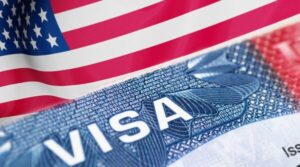
US must offer full support to India in case of conflict with China
The US have to raise India`s territorial dispute with China on par with China`s assertiveness in opposition to different allies and companions; communicate up in opposition to China`s “efforts at land-grabbing” in all multilateral structures which include the United Nations; provide India state-of-the-art army generation and provoke co-manufacturing and co-improvement of equipment; help India in strengthening its army and naval potential; and be organized to completely assist India in case of any other border disaster, former American officers in a main file on India-China ties have suggested.
Published through the Centre for a New American Security (CNAS) on Thursday, the file, titled `India-China Border Tensions and US Strategy withinside the Indo-Pacific`, argues that the 2020 disaster has left China in an wonderful role to assignment energy, even as India stays at the protecting. Lisa Curtis, who served because the senior director for South Asia withinside the National Security Council beneathneath Donald Trump, and in that potential at once handled India at some stage in the 2020 disaster, and Derek Grossman, a senior analyst at Rand Corporation who has labored withinside the Central Intelligence Agency, National Security Agency and the Defense Intelligence Agency, have authored the file.
Its different coverage pointers to americaA authorities encompass undertaking joint intelligence critiques with India to evaluate Chinese plans and intentions alongside the Line of Actual Control (LAC) and decorate contingency making plans in case of any other conflict; organising or helping an unofficial business enterprise that collates unclassified industrial satellite tv for pc imagery on PLA positions on the LAC and disseminates it; and signalling to Pakistan — at once and via different companions of Islamabad — approximately the want to live impartial at some stage in any India-China conflict.
The 32-web page file gives a survey of the records of India-China border dispute, the 2020 standoff, files China`s systematic violations of beyond agreements, and the army stability of energy at the ground. It additionally examines the feasible function of Pakistan in both beginning a 2nd the front or taking movements brief of a battle while India and China are in a standoff, and punctiliously examines what India might also additionally need from americaA and what Washington can provide in phrases of assist.
Delivering the keynote speech to mark the discharge of the file, Senator Jeff Merkley — who co-backed a decision condemning Chinese aggression on the border and commending India`s reaction withinside the Senate ultimate month — stated that China changed into often probing and checking out how a long way they may push alongside the LAC. He mentioned the conflict in December in 2022 in Arunachal Pradesh and stated that India driven back, primarily based totally on “actionable intelligence” furnished through americaA — confirming a US media file posted ultimate week that had first disclosed bilateral intelligence cooperation withinside the run-as much as the conflict. While announcing that he would love India to talk up extra vocally in opposition to Russian aggression in Ukraine and be a part of the global sanctions in opposition to Moscow, Merkley reiterated his assist for India withinside the standoff with China.
From the Chinese prism
The file recognizes that even as there are numerous theories, there aren’t anyt any considerable evidence-primarily based totally causes for why China did what it did in 2020. But it basically attributes developing Chinese belligerence withinside the beyond decade-and-a-1/2 of vis a vis India to its growing monetary and army strength.
Irrespective of motivation, the file says that Chinese movements — and next Indian responses — have left the prevailing border agreements inappropriate and out of date.
The file files China`s army sports alongside the LAC — the status quo of Western Theatre Command as accountable for the border with India, its extended troop presence alongside the LAC, the bolstering of incorporated air and missile defence systems, a main enlargement in infrastructure which include roads in touchy regions and the widening of air steps, and production of big structures.
While the authors additionally take a look at India`s measures on the LAC, they finish that China is in wonderful role. “Beijing has finished a shape of territorial enlargement through improving its army potential in the Aksai Chin…Small Chinese outposts alongside the border in 2020 have been joined through brief tent camps and finally developed into everlasting bases with cold-climate shelters. In the Depsang Plains, earlier than 2020, China maintained by and large an observational presence, while this vicinity now incorporates infantry shelters and ammunition garage centers, similarly to tanks and artillery systems.”
The file says that even in regions in which disengagement of forces has occurred, consisting of the Galwan and Hot Springs, China has established “big army bases connected to trendy roads” for smooth resupply near the border. China has additionally improved its air poser centers and logistic nodes now no longer simply alongside the Aksai Chin border however throughout the Tibetan plateau.
“China correctly has reinforced its energy projection alongside its disputed border with India, even as India is now at the protecting to reassert its territorial claims and save you similarly erosion of its role withinside the Ladakh region, even because it faces territorial threats from China withinside the japanese zone in their disputed borders withinside the Indian nation of Arunachal Pradesh.”
From the Indian prism
Terming the 2020 disaster as an “inflection point” that has led New Delhi to be extra receptive to cooperation each bilaterally and multilaterally via Quad, the file says that India`s hobby in attractive in “dual-tune relations” with China — “constructing more potent monetary and diplomatic ties even as downplaying army tensions on the border” — now stands diminished.
The LAC tendencies have additionally brought about an extended convergence among India`s view of the China undertaking and that of americaA, even if “their techniques for handling the undertaking range in numerous respects”, as an example on bringing in defence-associated additives in Quad or criticising China on Taiwan or Xinjiang.
But the file gives a nuanced image of what India might also additionally need from americaA withinside the eventuality of any other disaster. It says that even as Delhi could count on intelligence assist and iciness gear, it could additionally request “joint exercises, emergency senior-stage army and defence consultations, and inclusion in Quad statements of the want to shield Indian border claims—all to decorate its deterrence vis-à-vis Beijing”.
At the equal time, India desires to bring to its residents that it could manage navy operations appropriately and successfully, even in a wartime scenario. India may additionally agree with that joint statements with US that body the border disaster via the lens of US-China opposition may be visible as unhelpful. “As their united states will become an an increasing number of assured rising power, Indian officers might favor to keep away from the belief of being depending on Washington to control the border dispute with China.”
All of this shows that US policymakers are in a hard spot — “to do something, however now no longer too much” to help New Delhi. “Yet it’s miles plain that US coverage in this problem matters, and if treated effectively, can assist deter destiny Chinese incremental land grabs—or “salami slicing”— of India`s borders,” the record says.
From the American prism
The record says that till recently, American officers managing South Asia had focused in large part on making plans for a ability India-Pakistan battle however they had to pay greater interest to a ability India-China navy disaster for its implications withinside the Indo-Pacific and for the reason that each international locations are nuclear powers.
Curtis and Grossman endorse that the hardening Indian function on China can assist open the doorways for an American approach of “deterrence with the aid of using denial” — the supply of greater protection help that allows you to deny China the possibility of achievement with the aid of using elevating the fees for it. A 2nd manner to assist India is via “deterrence with the aid of using detection” — with the aid of using making sure India has state-of-the-art intelligence, surveillance and reconnaissance capabilities.
The record factors out that US help to India at a time of Chinese assertiveness may even assist ship a sign to different Asian international locations that strengthening protection ties with Washington in preference to placating Beijing is a greater powerful manner to stable sovereignty.
“The United States need to help New Delhi diplomatically and militarily, but now no longer trumpet this assistance. Washington need to discover innovative approaches to reinforce India`s function with out looking for to mediate the battle. Given the consequences for its broader Indo-Pacific approach, Washington can not come up with the money for to live absolutely at the sidelines of this battle nor forget it till battle breaks out.”
Future outlook
The record is pessimistic approximately the destiny. It argues that with each China and India “improving infrastructure, converting their guidelines of engagement for the reason that 2020, and introducing new and superior guns structures on their facets of the disputed border”, the opportunity of persisted standoffs erupting into full-blown battle continue to be high.
At the equal time, the potentialities for negotiating a political agreement of disputed borders stays low, mainly for the reason that China has been “bored with clarifying the LAC via an trade of maps, as India has suggested”. “China is resisting the map trade method possibly due to the fact territorial ambiguity favours exaggerated claims and helps preserving navy advantages.”
It is on this backdrop that the record lauds India for its endurance and calm and efforts to discover diplomatic solutions, whilst squarely setting the obligation on China for “upping the ante” with the aid of using its infrastructure development, navy deployments and encroachment into territory India considers its own.






